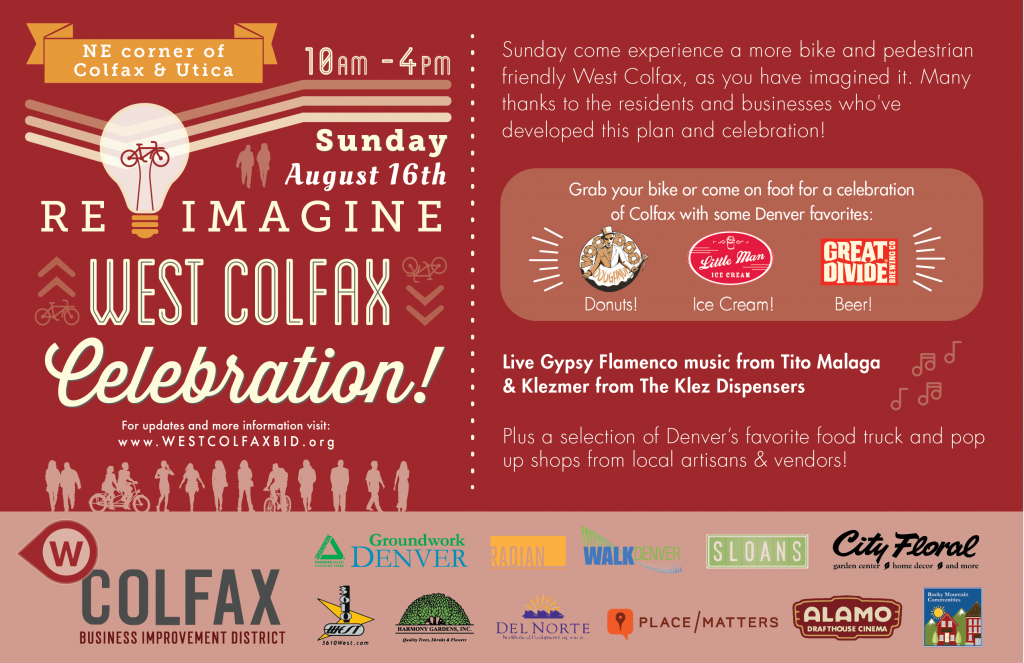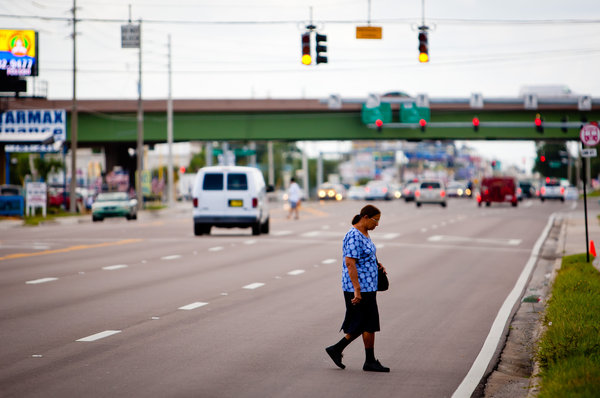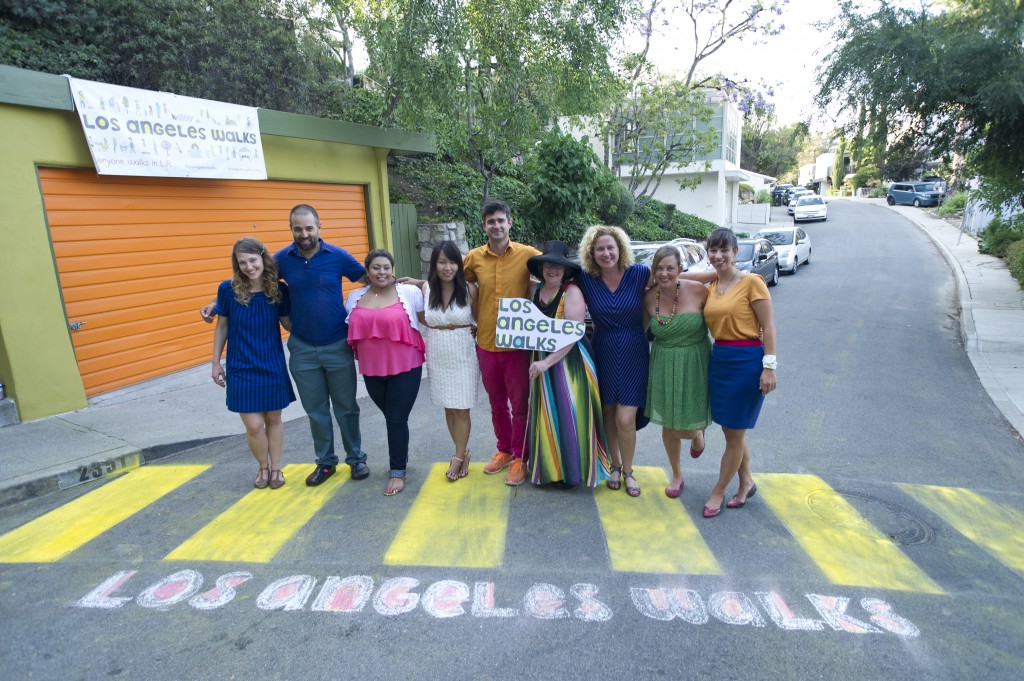Jack Kerouac, who spent time on Colfax Avenue in the course of his travels, called it the “longest, wickedest road in America.” It may not be the wickedest, anymore, but many do say that it’s the longest commercial street in the world. Lined with historic hotels still sporting their fantastic midcentury modern neon signs, Colfax has welcomed lots of new businesses in recent years. Bus lines and a new light rail station (finished in 2013) on Colfax have made the Avenue more accessible than ever.
“Colfax Avenue is this major east-west connector in Denver,” says Jill Locantore of pedestrian advocacy organization WalkDenver. “It’s pretty storied in Denver’s history; before the interstate system was built, it was the major travel corridor through Denver. So there were tons of people who came across the country and were doing road trips and went along Colfax Avenue. But it’s really continued to evolve over time.”
Despite all the development and redevelopment happening on Colfax right now, though, it’s still not a street you’d really want to walk or bike. Not yet. It’s too massive and car-dominated. Even crossing the street on foot can be dangerous. That’s why WalkDenver – along with partners like Place/Matters, and an army of planning students from the University of Colorado – started collecting data last year on pedestrian-Colfax interactions. They created an app called WALKscope (which invites users to enter location-specific data on sidewalk quality, pedestrian counts, etc), to help them identify specific interventions that might make Colfax more bike and ped friendly.

The findings led to meetings with public transit agencies, which in turn led to the creation of a HUGE AWESOME REIMAGINE WEST COLFAX EVENT coming up right around the corner, on August 16th. Picture one solid block of Colfax Ave transformed into pedestrian/cyclist/donut lovers heaven for the day, and that’s about what you’re gonna get:
1. Tito Malaga will be playing live gypsy flamenco.
2. The Klez Dispensers (best band name in the history of band names) will be playing, yep, Klezmer.
3. Pop-up parklets on the sides of Colfax – sort of like the ones in NYC’s Union Square.
4. Three City Councilmembers will be in attendance to celebrate and make some remarks.
5. Expect food trucks, pop up shops, Little Man ice cream, Great Divide beer (donated by the local brewery), AND
6. IF you complete the Tour De Donut pop-up protected bike lane loop – which will demonstrate three different kinds of protected bike lanes – you’ll get to nosh on free Voodoo Donuts. By the way, cyclists – City Councilman Paul Lopez has promised to bike the Tour De Donuts, so if you’ve ever wanted to enjoy a Captain my Captain with a local official, now’s your chance.
Not gonna lie – we’re kind of jealous.
OH WHAT A DIFFERENCE A LITTLE LIGHT MAKES
What feature are the folks of WalkDenver most excited about? “It may not sound that exciting,” says Locantore, “but we’re really excited about an enhanced pedestrian crossway that we’re putting in for the day. It’ll simulate a pedestrian activated traffic signal, so pedestrians push a button, a light flashes, and cars stop. We’re going to actually have rainbow colored crosswalks, to really highlight this as a pedestrian crossing area.”
How’s that for pedestrian visibility? There will also be a planted median refuge area in the middle of the street, so that you don’t have to make it all the way across in one go, as well as “bulbouts” at the ends of sidewalks, to further shorten the distance a pedestrian has to cross to get to the other side. It’s all about shrinking carspace and growing peoplespace.
And what about cars, you ask, if pedestrians are going to be crowned king for the day? “Cars are welcome as guests, but they need to slow down and respect the people on foot,” says Locantore. Awesome. That pretty much describes our dream city, here at ioby. If you see any crazy community organizers charging the streets of Brooklyn with signs telling cars that they’re “welcome as guests,” that’ll probably be us.
GUYS, THIS IS NOT A PIPE DREAM
The best news of all is that this stuff is not pie-in-the-sky. The changes that WalkDenver and their partners are implementing on Aug 16 are totally, completely, 100% feasible as long-term, permanent solutions.
“We didn’t want to demonstrate things that were just a fantasy and could never actually happen,” says Locantore, “so we very deliberately did a design workshop where we invited representatives from Denver Public Works, from the Regional Transportation District (the local transit agency), and from C-DOT (the state transportation agency). And we put them to work. We gave them an aerial photo of the block of Colfax that we we’re focusing on, and we told them to draw what they thought we could do to Colfax that would make it more pedestrian friendly that would actually be realistic and could be implemented down the road. So a lot of the ideas we’re testing out are ones that came directly out of that conversation with the agencies that would be responsible for permanent implementation.”
So come enjoy the day, meet some neighbors, eat some donuts, drink some beer, and then share your feedback via the video booth and story board that’ll be set up for you. YOUR VOICE MATTERS, and the organizers can’t wait to see you.
If WalkDenver’s work inspires you to take action in YOUR neighborhood, or if you have awesome ideas about how to make your town greener, safer, and more fun, let us help! Tell us your awesome idea right here. We’d love to help you get started today.
Pssst…. In OTHER ioby news: Some great streets in LA are upping their games, too, and we’re helping them raise money to do it.




